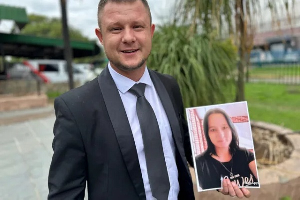That the fastest growing musical expression in Ghana is gospel music. Since the late 1980s, gospel music has assumed an increasingly prominent position in Ghanaian religious and social life.
According to a study by Abanfo Atiemo of the University of Ghana, “Gospel music constituted about 75% of recorded musical works in Ghana in 1993; and in 2001 it was believed that about 90% of musicians were plying their trade in churches.”
This boom in gospel music, according to him, coincided with the phenomenal spread of the charismatic movement. The charismatic movement affected most branches of Ghanaian Christianity and also produced a distinct group of churches that eventually came to be known as “Charismatic Churches.” The movement indelibly left its mark on the Church, even till now.
That gospel music is the fastest growing genre of music in the country even today cannot be contended. That gospel music and musicians are the most critiqued, yet the less recognised cannot be gainsaid. That gospel music holds Ghana music, performance-wise is a truism.
That a time will come when gospel musicians will dominate the music scene on all facets is no mirage. Patrons of gospel concerts this year, from the SP Kofi Sarpong Borborbor Concert to Ohemaa Mercy’s Thahilla Experience to Joe Mettle’s God of Miracles Live recording concert, to mention a few, witnessed star-packed gospel concerts, conceded that gospel musicians have everything it takes to wow an audience. And they say they were wowed.
Could it be that they had low expectations? And that the “little” they saw was way beyond their expectation? I don’t believe so. And oh, they also were in for a well-coordinated events.
Gospel music is a whole industry; the genre has sustained the music industry all this while. That is why when there is a seeming decline in the kind of gospel songs churned out in recent times, it becomes a topical issue.
There is a school of thought that spirit-filled gospel songs these days are rare. The school believes that messages in the songs are not as edifying as they used to be. The argument is even extended to the caliber of the artistes: that gospel had seen better days, not what exists now.
Call it the usual nostalgia of seeing everything in the past as better than the current. Regardless, they have a point. There is some element of fulfillment in listening to “old” gospel songs. Could it be the production? I doubt, because there is better technology to record these days. Or I may agree, because the “better” technology these days even makes music production easier, faster and swifter.
Message? I believe so. So much attention was paid to content, that the message must be sent out to help uplift, edify and transform the vulnerable.
If the Charismatic movement played a major role in influencing modern day gospel music, it did not leave in its tract, tradition. Traditional music forms such as agbadza, asafo, adowa, borborbor and jama, which has been popularised in recent times by the youth, have all been part of the gospel agenda.
And of course, songs from traditional western Christian hymns that are sung to new rhythm and tempo and sometimes with the accompaniment of instruments also are a popular feature. So also are those repertoire that were not accompanied by any instrument – solo and recitatives. Some called them the acapella groups.
If I look back as an avid consumer of gospel music, I see a generation of committed artistes who helped shape the gospel fraternity. I won’t attempt to do a roll call. I will miss the mark, for there are many I never saw, nor heard of.
Regardless, I recollect many era of trends in the gospel. A special mention of the Ahensan Gospel Band and Prof. Kofi Abraham from the Asante Region readily influenced gospel. Wofa Asomaning did his bit, as I grew up to his unique repertoire. Legend Yaw Sarpong with his Asomafo Band, who has over 25 albums to his credit, has relived generations, and till today, performs and sheds some relevance on the industry.
If the Charismatic movement is a portent to modern or contemporary gospel, then Pentecostalism has Elder Mireku to thank: phenomenon minister of the gospel. Oh yes, female stars Esther Nyamekye and Comfort Annor also need special mention.
Rev. Michael Osei Bonsu and Rev.Kusi Berko revolutionalised the industry with the accordion. Their evangelistic style of ministration was inspiration to many to follow later.
The springing up of music groups, especially campus ministrations, as part of the evangelistic movement, saw the birth of Joyful Way Incorporated in 1972. The group, which has 13 albums in its 45 year history, cannot miss out in the annals of the success of gospel music in Ghana.
The rise of Tagoe Sisters and Daughters of Glorious Jesus (through the grooming of Rev. Amoako) was also born out of the evangelism movements, where music became part of spreading the word.
If the Tagoe Sisters and Daughters of Glorious Jesus’ rise was purely community outreach based, Joyful Way Incorporated was more of winning souls on campus and the community. Mary Ghansah also adopted the campus ministration to success.
If groups like Naana and Dan, Suzzy and Matt, Jane and Bernice, and Willie and Mike existed, you know where the inspiration came from.
If today you enjoy the likes of Joe Mettle, Akesse Brempong, Denzel Agyemang-Prempeh, KODA and the many contemporary gospel music talents, then these forerunners, who blazed the trail of gospel music in the early Charismatic era need special mention: Tom Bright Davis, Rev. Eric Kwarpong, Ola Williams, Danny Nettey, Rev. Okasa Lamptey, to mention a few.
Some of the names may be household names, and their contributions, quite known. Tom Bright Davis’ contribution to gospel music in Ghana will be told some time later.
Entertainment of Monday, 20 November 2017
Source: Flex Newspaper













